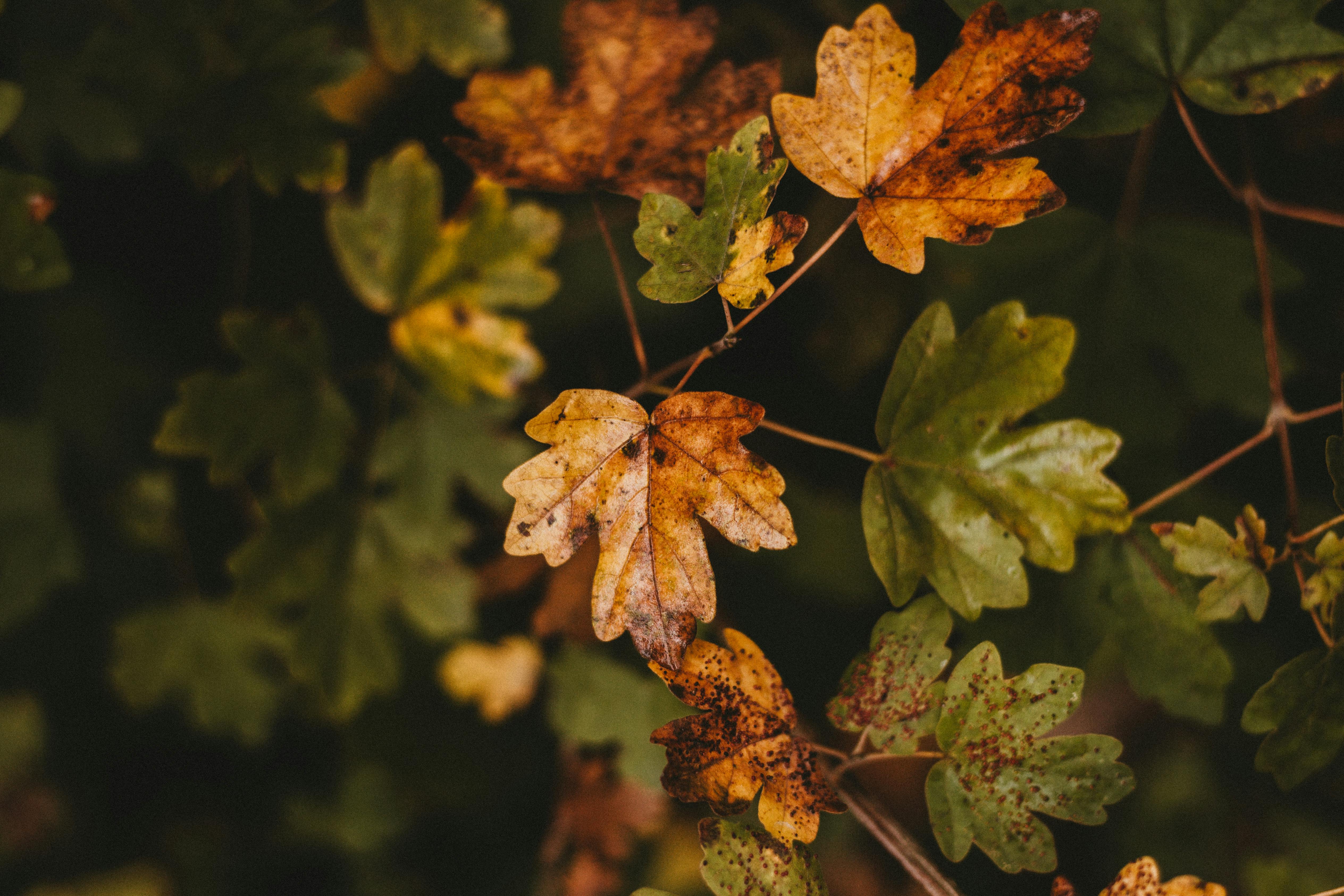Possible Reasons for Zucchini Leaf Discoloration
Zucchini leaves can discolor due to a variety of causes, including environmental factors, nutrient deficiencies, and pest or disease problems. Environmental conditions such as too much sun or heat, drought stress, or too much fertilizer can lead to yellowing and curling of the leaves. Nutrient deficiencies such as nitrogen, potassium, and magnesium can also cause discoloration. If the discoloration is accompanied by other signs such as wilting or spotting of the leaves, it may be caused by a pest or disease problem like blight or powdery mildew. To prevent leaf discoloration from occurring due to environmental issues, it is important to ensure that the plant is getting adequate water and nutrients. If pest or disease problems are suspected, then it is important to take steps to remove the pests or treat the plants with an appropriate fungicide.
In some cases, zucchini leaves may turn yellow due to old age. As the plant matures and nears harvest time, older leaves will naturally start to yellow and die off as part of its natural life cycle. While this type of discoloration is normal and not cause for concern, it is still important to monitor the plant closely for any other signs of distress that might indicate a more serious problem.
Nutritional Deficiency Affecting My Zucchini Plant
Nutritional deficiency can be a major cause of poor health and growth in zucchini plants. If your zucchini plants are not growing as expected, it is likely that they are lacking essential nutrients. It is important to understand the nutrient requirements of your zucchini plants and provide the appropriate nutrition to ensure good growth and productivity.
The most common nutrient deficiencies in zucchini plants are nitrogen, phosphorus, and potassium. A lack of nitrogen can cause yellowing of the leaves, slow growth, poor flowering, and spindly stems. A lack of phosphorus can lead to stunted growth, small fruits, and poor flowering. A lack of potassium can result in yellow or brown leaf margins, leaf chlorosis (yellowing), and poor fruit production.
It is important to monitor the soil pH levels and nutrient content of your garden regularly to ensure that your zucchini plants are not suffering from a nutritional deficiency. If you suspect that your zucchini plant may be suffering from a nutrient deficiency, you should take soil samples for testing at your local agricultural extension office or garden center to determine the exact cause.
Once you have identified the specific nutrient deficiency affecting your zucchini plant, you can begin correcting it with fertilizer or amendments specifically formulated for the type of deficiency present in your soil. It is important to follow directions carefully when applying any fertilizers or amendments as too much can damage your plants. Additionally, be sure to water thoroughly after application and monitor closely for signs of improved health in your zucchini plant.
Lack of Nitrogen in Soil as a Cause for Yellow Leaves
Nitrogen is an important nutrient for plants, and it plays an essential role in the formation of chlorophyll, which is responsible for the green color of leaves. When there is a lack of nitrogen in the soil, plant leaves can become yellow. This is because the plant cannot produce enough chlorophyll to keep its leaves green. The yellowing of leaves can be a sign that the soil lacks nitrogen, and this should be addressed as soon as possible.
Nitrogen deficiency in soil can be caused by several factors. First, the soil may not have enough organic matter, such as compost or manure, to provide adequate amounts of nitrogen for plants. Second, some soils naturally contain low amounts of nitrogen, or it may have been depleted due to over-fertilization or over-cultivation. Third, some plants are more sensitive to nitrogen deficiency than others and may require more nitrogen than other plants.
The best way to address nitrogen deficiency in soil is to add organic matter to the soil that contains high levels of nitrogen. Compost and manure are excellent sources of organic matter that will help replenish the soil’s nitrogen levels. Additionally, fertilizers containing nitrogen can be used to supplement organic materials if needed. It is important to use fertilizers carefully and follow instructions on how much fertilizer should be applied so as not to cause further damage or depletion of the soil’s nutrients.
Once sufficient levels of nitrogen have been added to the soil, it should be monitored regularly so that any further signs of yellowing can be addressed quickly before they become too severe. Proper care and monitoring will ensure that your plants get all the nutrients they need for optimal growth and health.

Yellow Leaves on Zucchini
Yellow leaves on zucchini can be caused by a number of different diseases. Identifying the disease and treating it correctly is essential for keeping your zucchini plants healthy and productive. In this article, we’ll discuss how to identify and treat the various diseases that can cause yellow leaves on zucchini plants.
The most common causes of yellow leaves on zucchini are bacterial wilt, powdery mildew, downy mildew, and cucumber mosaic virus. Each of these diseases has different symptoms that can help you identify it.
Bacterial wilt is one of the most serious diseases that can affect zucchini plants. It is caused by a bacteria called Erwinia tracheiphila which spreads through the plant’s vascular system, blocking the flow of water and nutrients. Symptoms include yellow leaves that wilt quickly after they appear, followed by wilting and death of the entire plant. Treatment includes removing infected plants from the garden to prevent spread of the disease, applying copper fungicide or a soil drench containing streptomycin or oxytetracycline to control infection in remaining plants, and rotating crops in future years to avoid further outbreaks.
Powdery mildew is another common cause of yellow leaves on zucchini plants. It is caused by a fungus called Podosphaera xanthii which produces white powdery spots on the undersides of leaves. Other symptoms include stunted growth and distorted foliage. Treatment includes removing infected foliage, pruning affected areas to improve air circulation around plants, applying sulfur-based fungicides to prevent new infections from occurring, and avoiding overhead irrigation which can spread spores around the garden.
Downy mildew is another fungal disease that causes yellow leaves on zucchini plants. Unlike powdery mildew which produces white spots on foliage, downy mildew causes yellowish-brown spots which become fuzzy with grayish-white spores when wet weather occurs. Treatment includes removing infected foliage as soon as possible to reduce spread of spores, improving air circulation around plants with pruning or staking if necessary, avoiding overhead irrigation if possible, and applying copper-based fungicides when humidity levels are high enough for disease development (above 80%).
Finally, cucumber mosaic virus is a viral disease that can cause yellow leaves on zucchinis as well as stunted growth and distorted foliage. Unfortunately there is no cure for this virus; however preventing its spread is important for keeping your garden healthy. This can be done by removing infected plants immediately to avoid further spread of infection, planting resistant varieties in future growing seasons if available in your area, avoiding physical contact with wild hosts such as weeds or insect vectors such as aphids which carry the virus from plant to plant, and maintaining good sanitation practices in your garden such as cleaning up debris at season’s end to discourage overwintering pests which may carry infection into next season’s crop.
Too Much Water Can Cause Yellow Leaves in Zucchini
Water is essential for plant growth, but too much water can be detrimental to the health of your zucchini plants. When zucchinis are over-watered, their leaves will turn yellow and eventually die. Over-watering not only affects the leaves, but also causes smaller fruit production and root rot. To prevent this from happening, it is important to ensure that zucchini plants get just the right amount of water.
The first step in preventing yellow leaves is to determine how much water your zucchini plants need. Different climates require different amounts of water, so you should adjust your watering schedule accordingly. In general, zucchinis should receive about 1 inch of water per week during the growing season. If you live in a dry area or experience a drought, you may need to increase the amount of water you give your plants.
Once you have determined how much water your zucchinis need each week, it is important to make sure that they actually get that amount of water. One way to do this is by using a soil moisture meter or other instrument that can measure soil moisture levels. This will help you determine if your plants are getting enough or too much water. You can also look at the leaves for signs of overwatering – if they are yellowing or wilting, it’s a sign that your plants may be getting too much water.
If you find that your zucchinis are getting too much water, there are a few things you can do to reduce the amount they receive. The first is to reduce the frequency with which you water them – instead of watering every day, try watering every other day or even every third day depending on weather conditions and soil type. You can also adjust where and how you apply the water – if possible, try adding mulch around the base of the plant which will help hold moisture in and reduce evaporation rates. Finally, make sure that drainage is adequate – if excess water cannot escape quickly enough from the soil then it will stay around for longer than desired and could lead to root rot and yellowing leaves.
By following these steps and keeping an eye on how much and when you are watering your zucchinis, you can prevent yellow leaves caused by overwatering and keep your plants healthy and productive!
Over-Fertilization of Zucchini Leaves
Zucchini plants require a delicate balance of nutrients to grow and produce healthy fruits. When too much fertilizer is used, it can lead to a condition known as over-fertilization, which can result in yellowing of the leaves. Over-fertilization can occur when fertilizer is applied directly to the soil or mixed into the soil at planting time, or when fertilizer is applied too often throughout the growing season. This excessive amount of nutrients can cause an imbalance in the plant’s nutrient uptake, leading to yellowing and stunted growth.
In some cases, over-fertilization can be corrected by adjusting the amount of fertilizer being applied or by flushing out excess nutrients with water. However, if left unresolved, this condition can lead to other problems such as root rot or plant death. Therefore, it is important to monitor fertilizer use and adjust accordingly for optimal plant health. If you suspect your plants are suffering from over-fertilization, cease applying additional fertilizer and allow your plants time to recover.

Conclusion
The causes of a zucchini plant turning yellow can range from nutrient deficiencies to environmental stressors. Each cause must be properly identified in order to effectively treat the plant. Yellowing of the leaves may also be caused by diseases such as powdery mildew or blight, which require specific fungicides for treatment.
In order to prevent yellowing of the leaves, it is important to provide adequate water and nutrients, maintain proper soil pH levels, and practice good garden hygiene. Additionally, avoiding overhead watering and removing diseased leaves can reduce the risk of fungal diseases.
By following these tips and properly identifying the cause of yellowing leaves, gardeners can make sure their zucchini plants stay healthy and productive for years to come.

